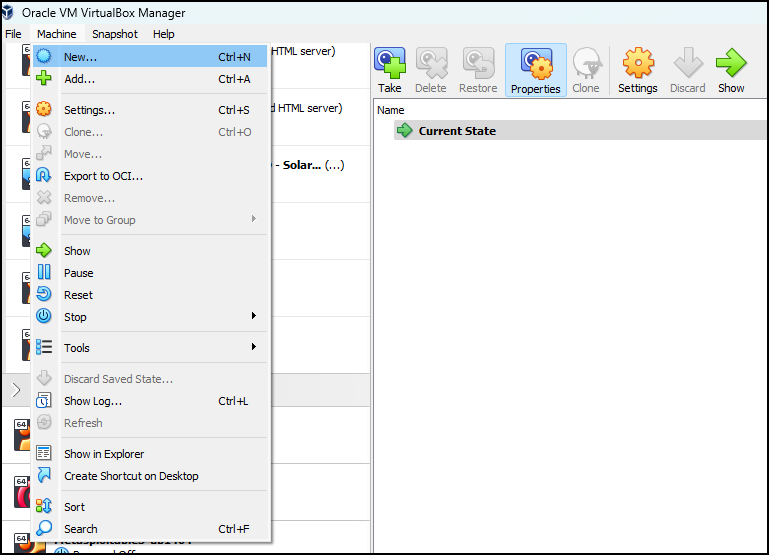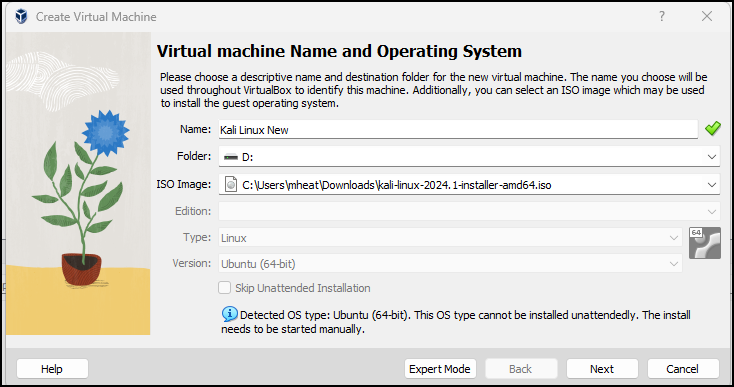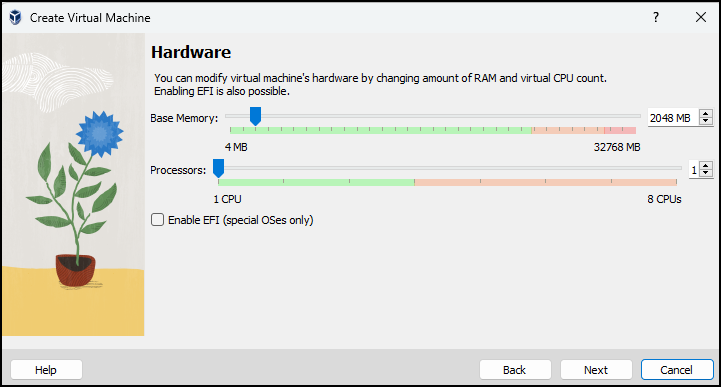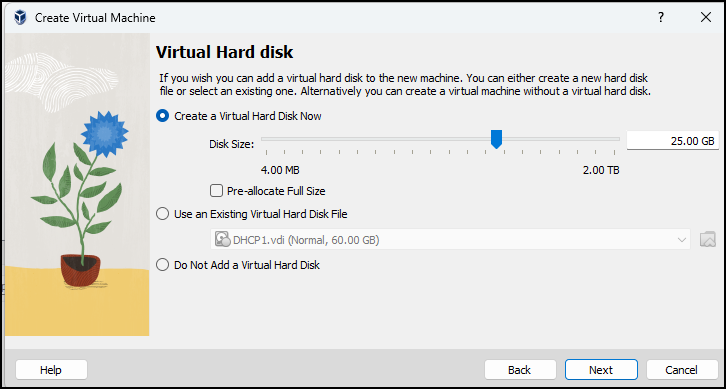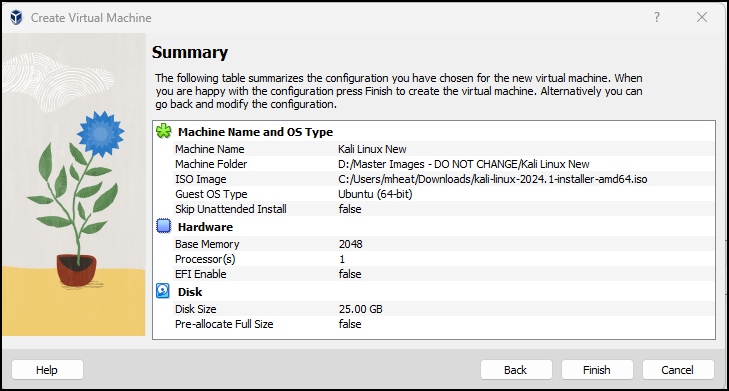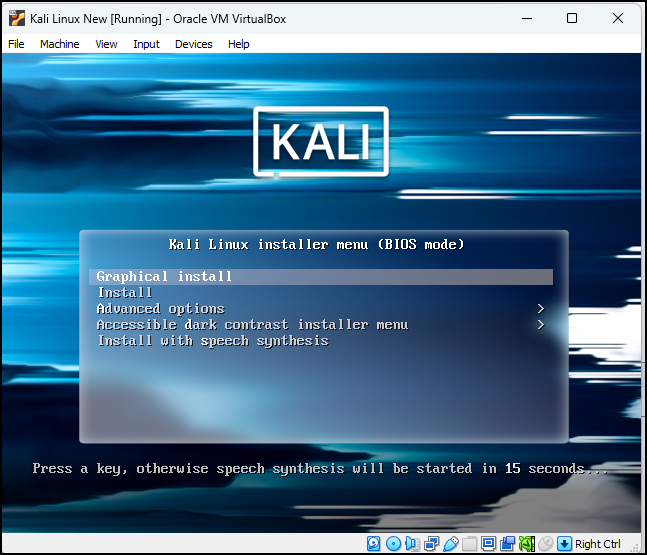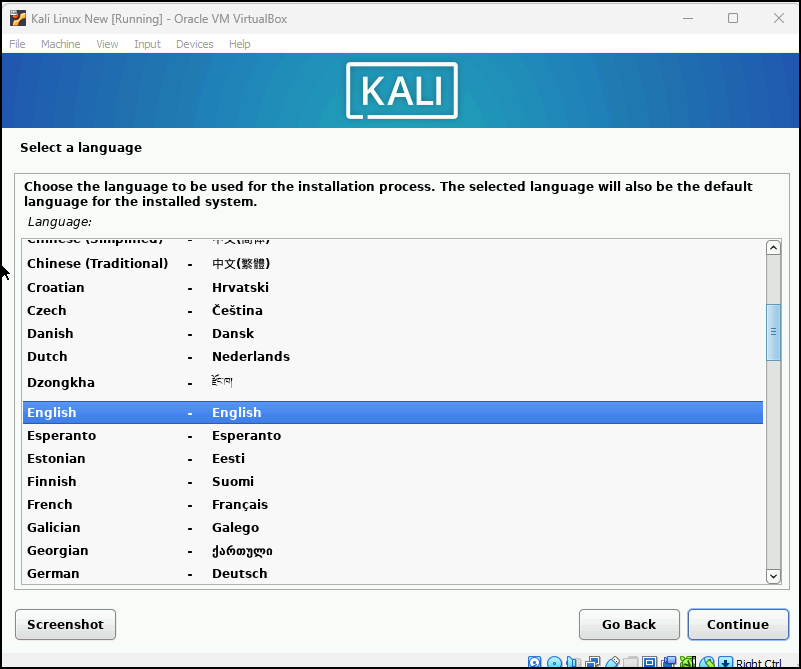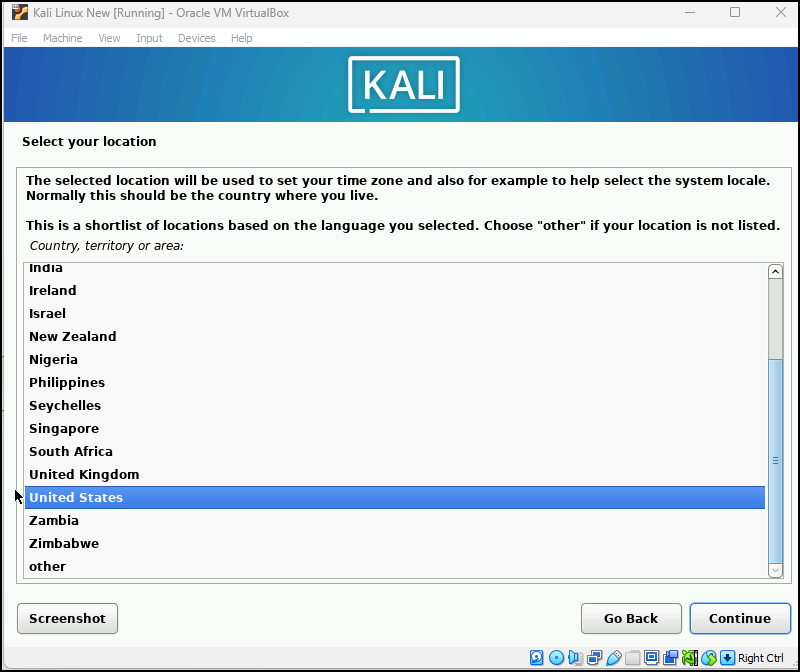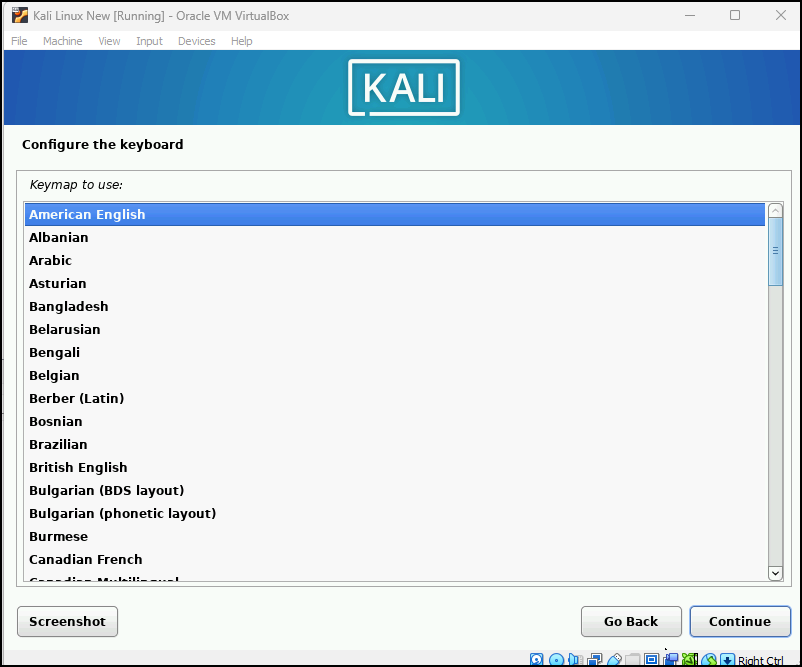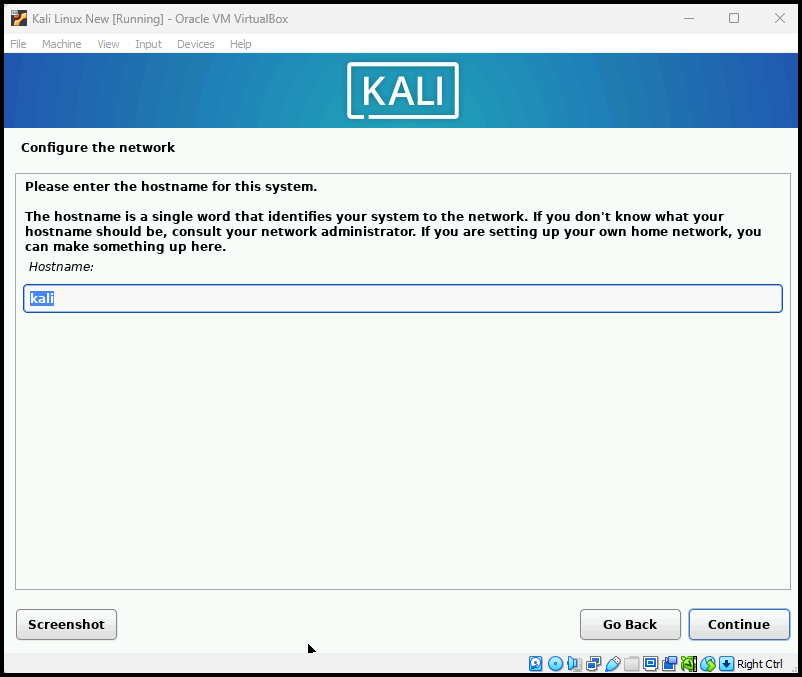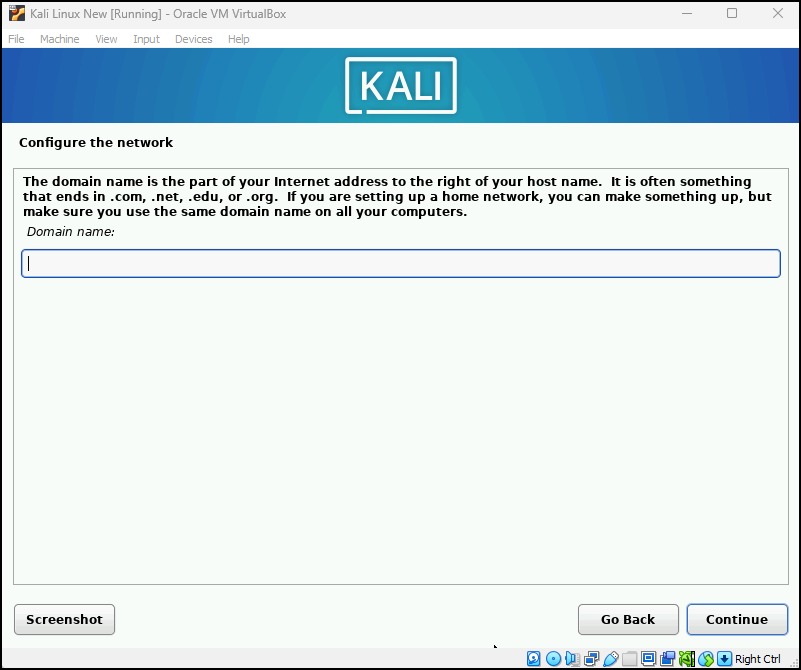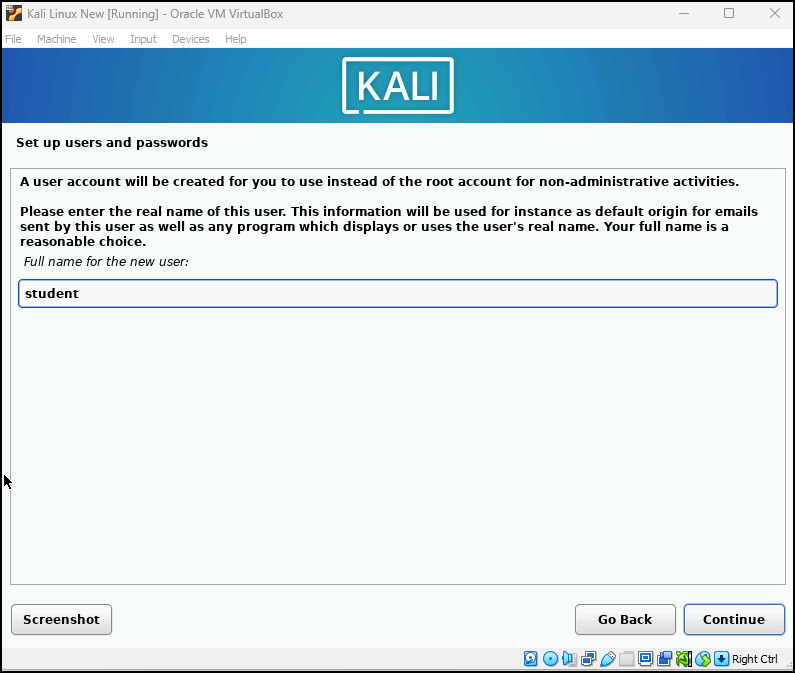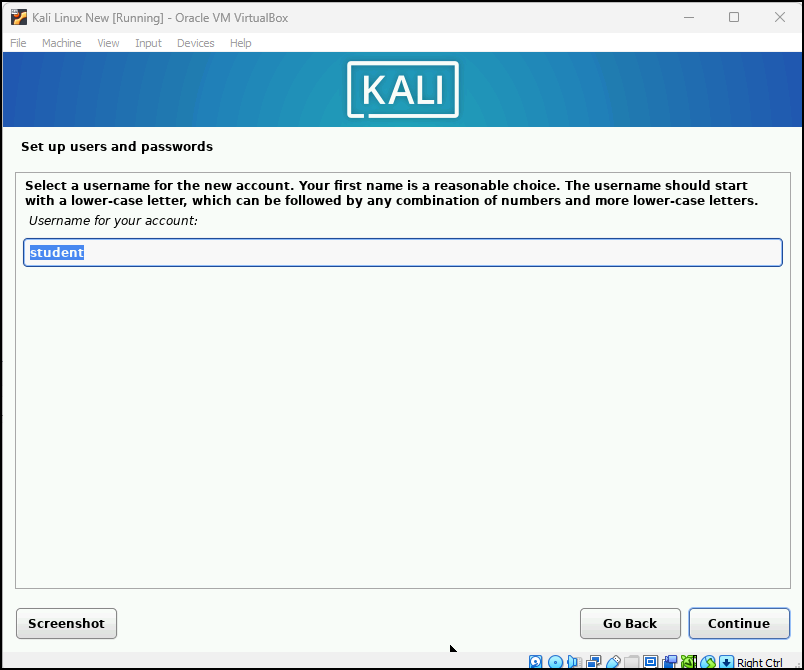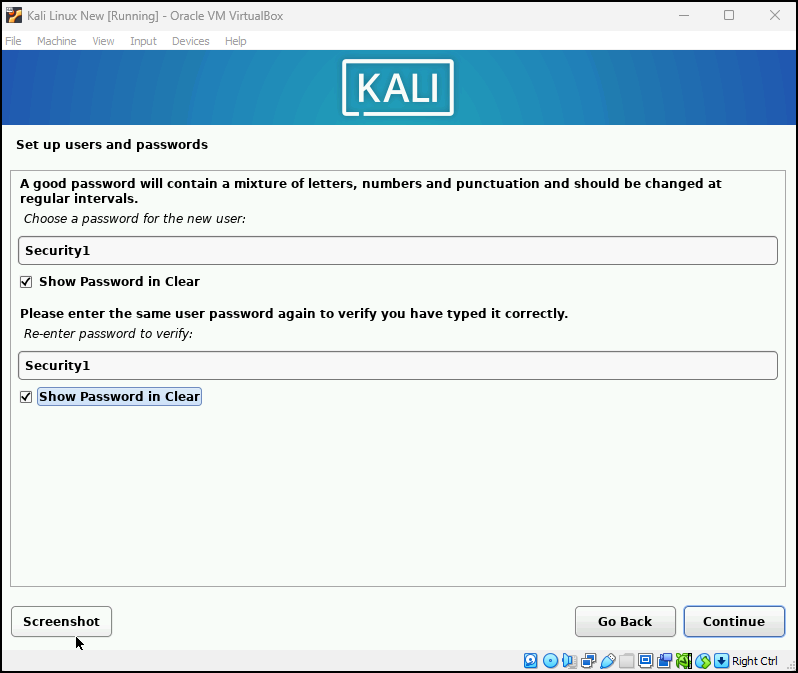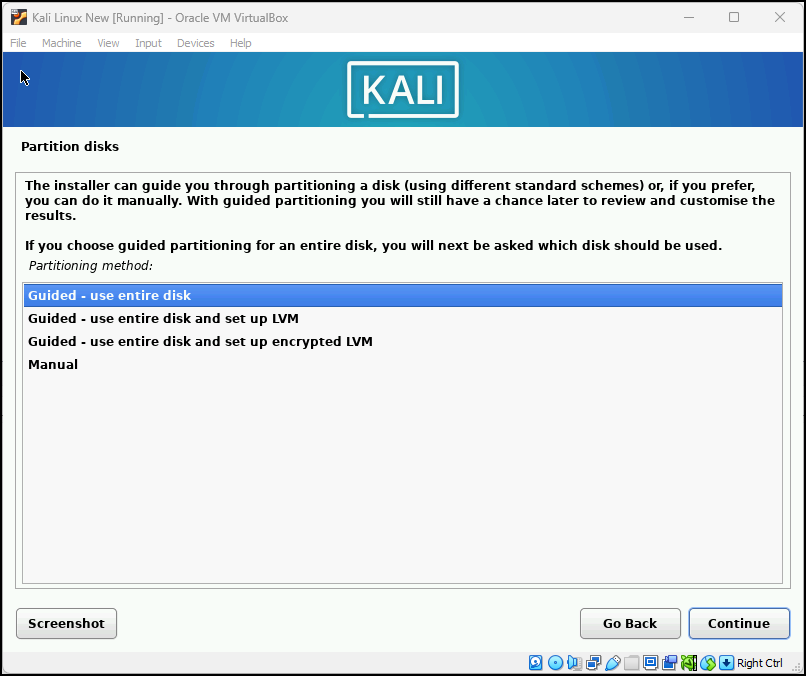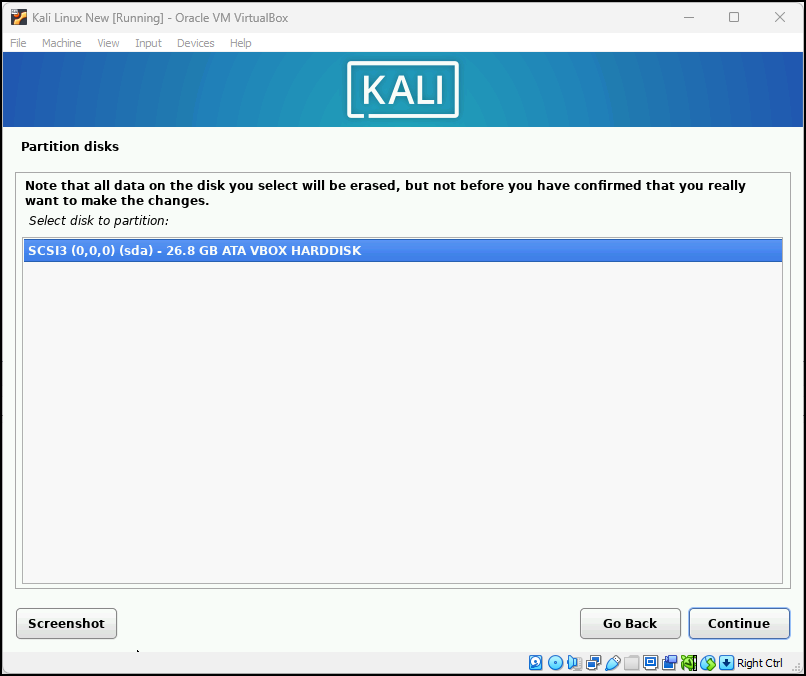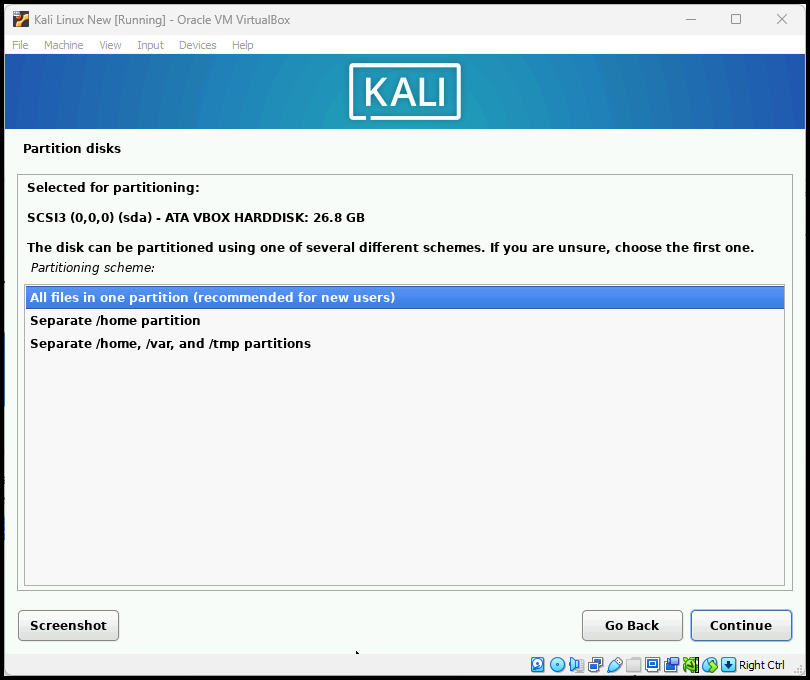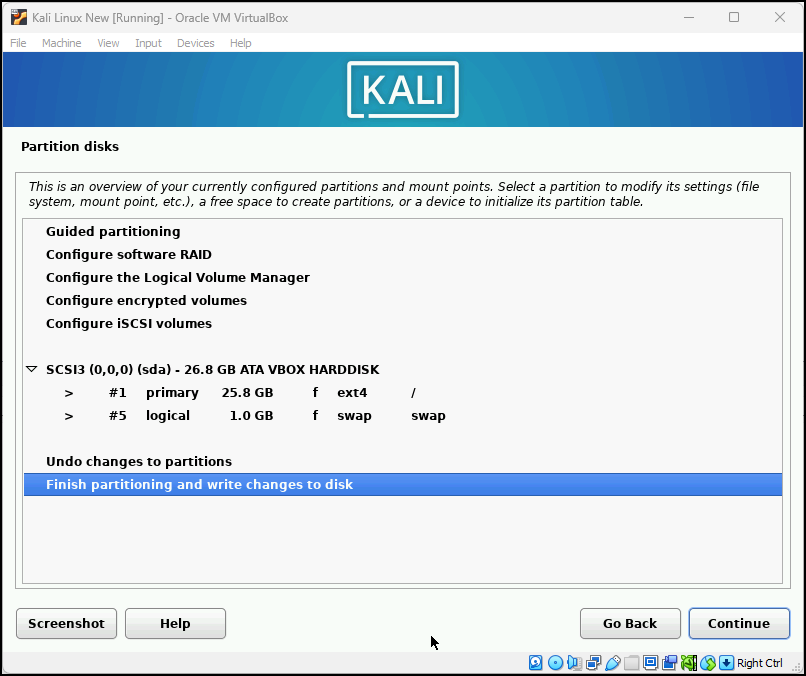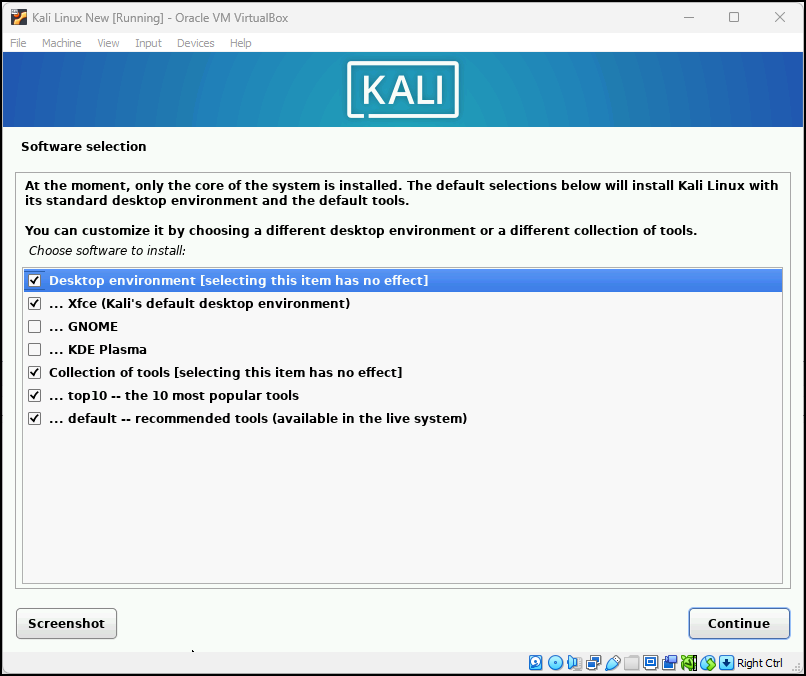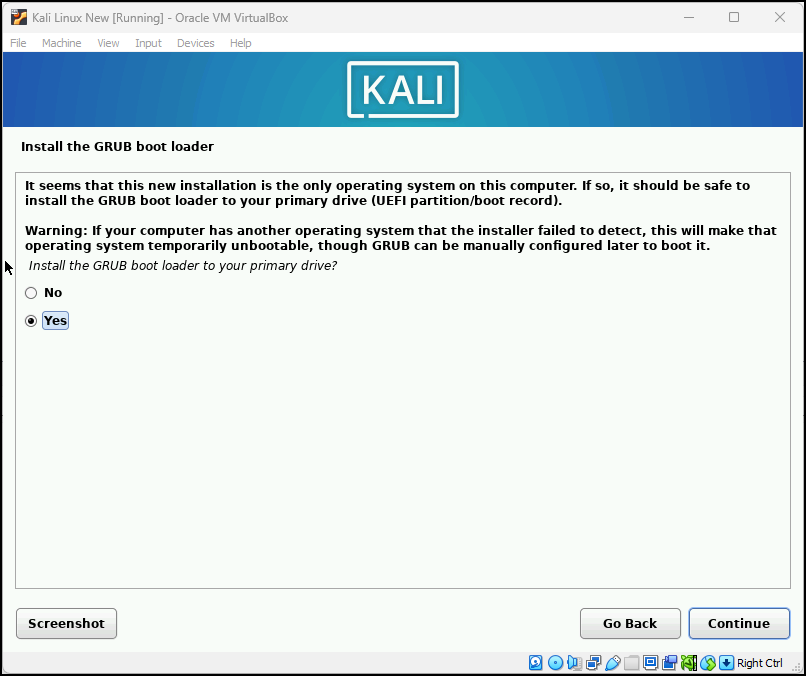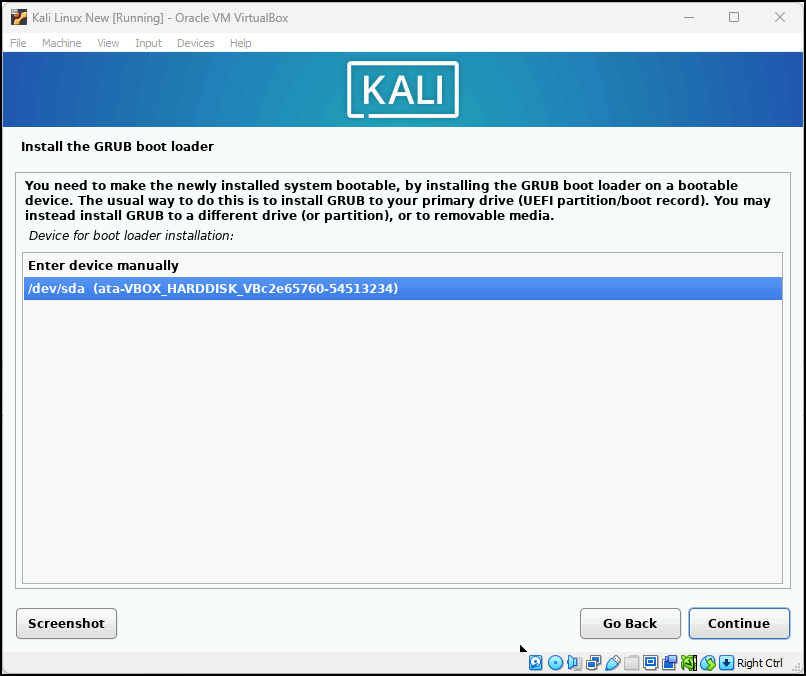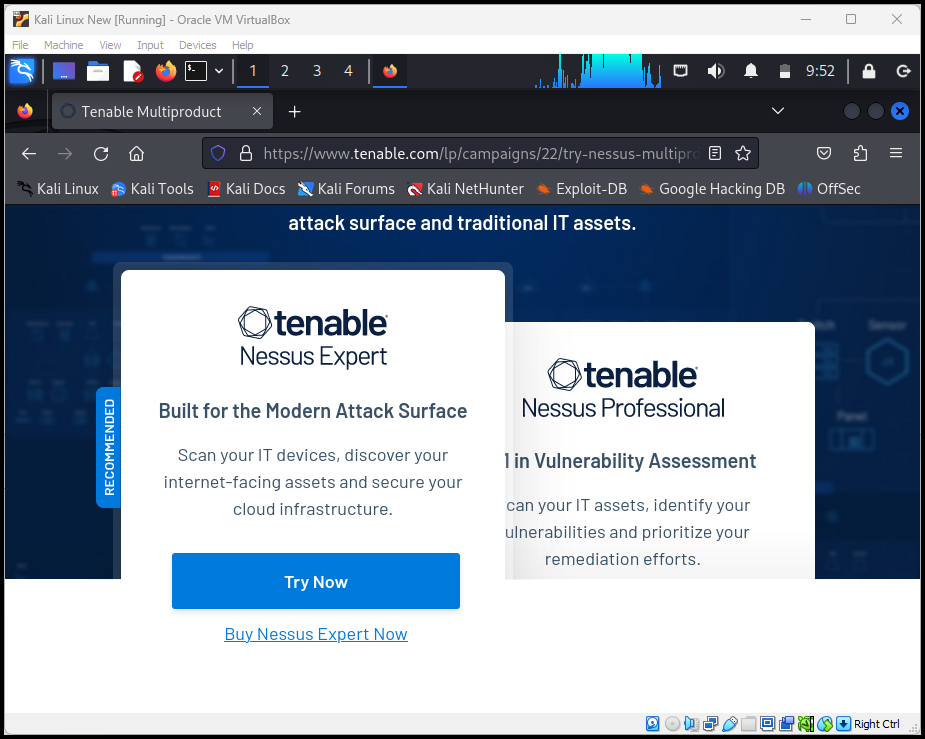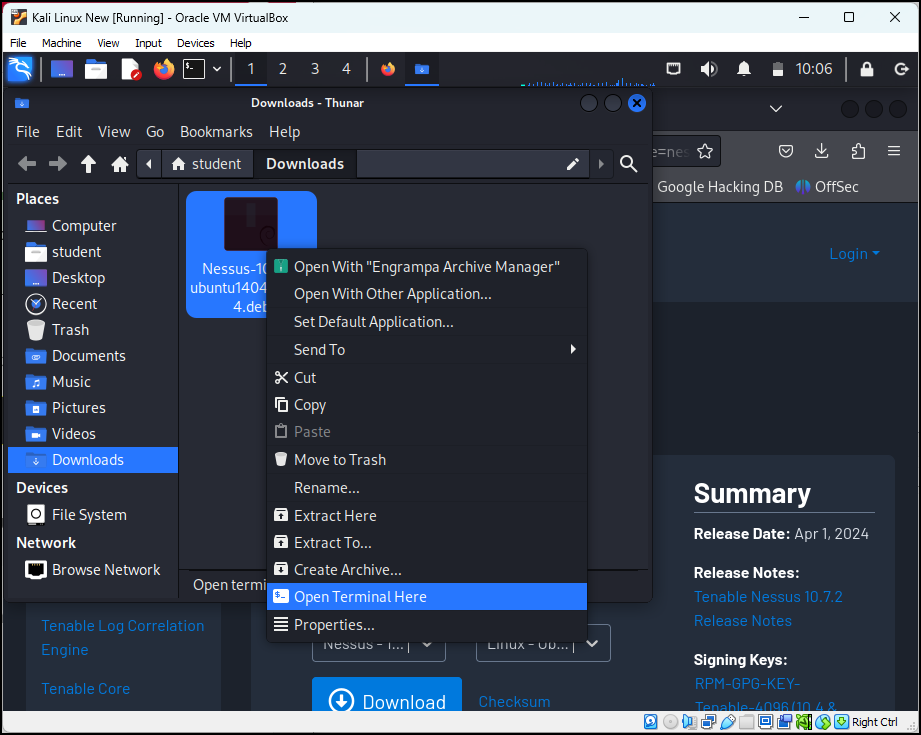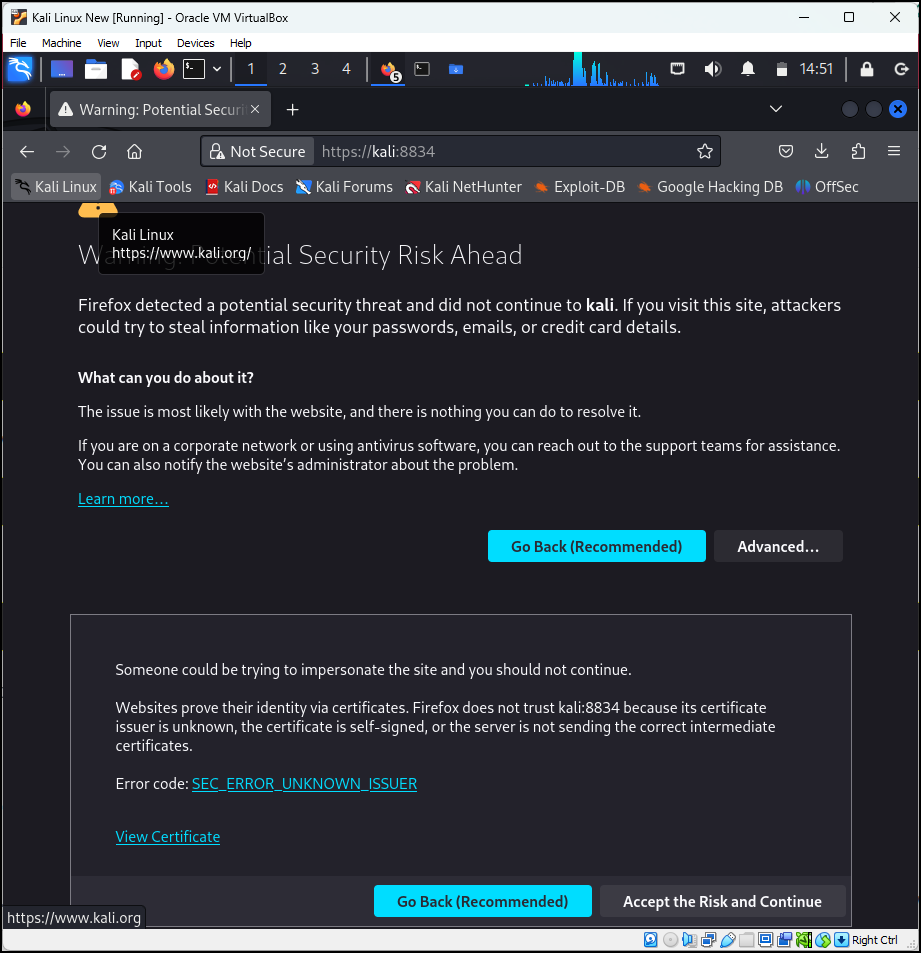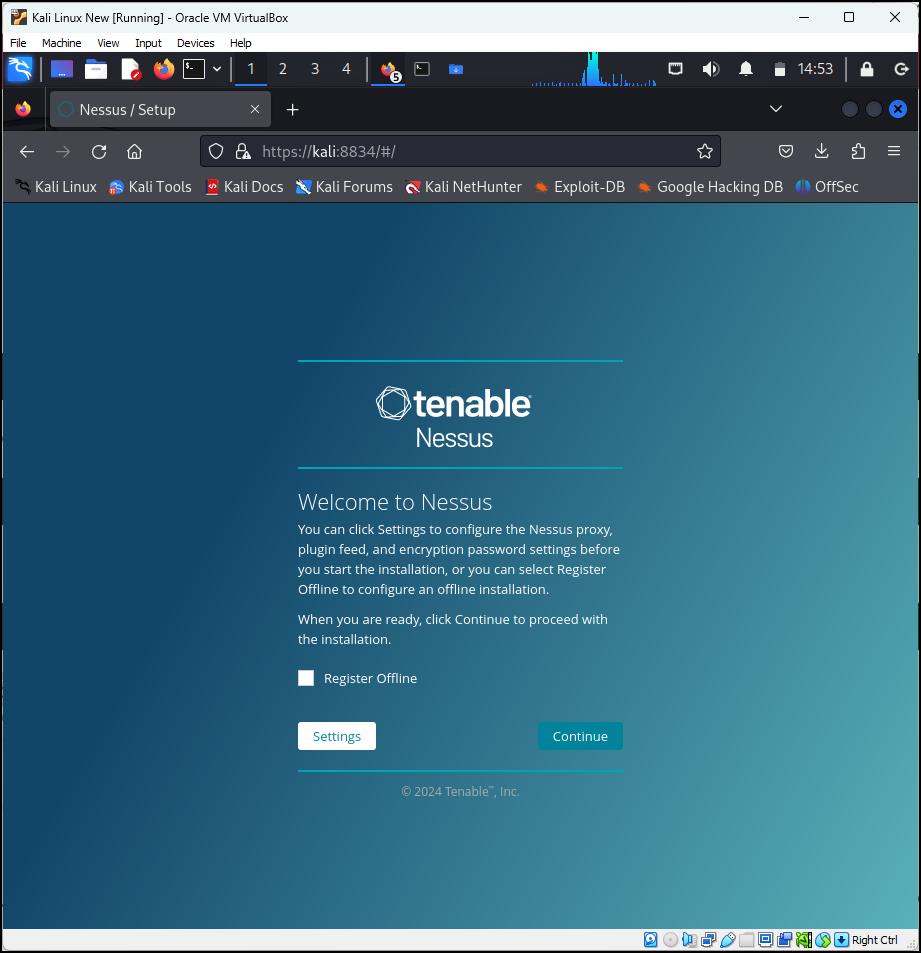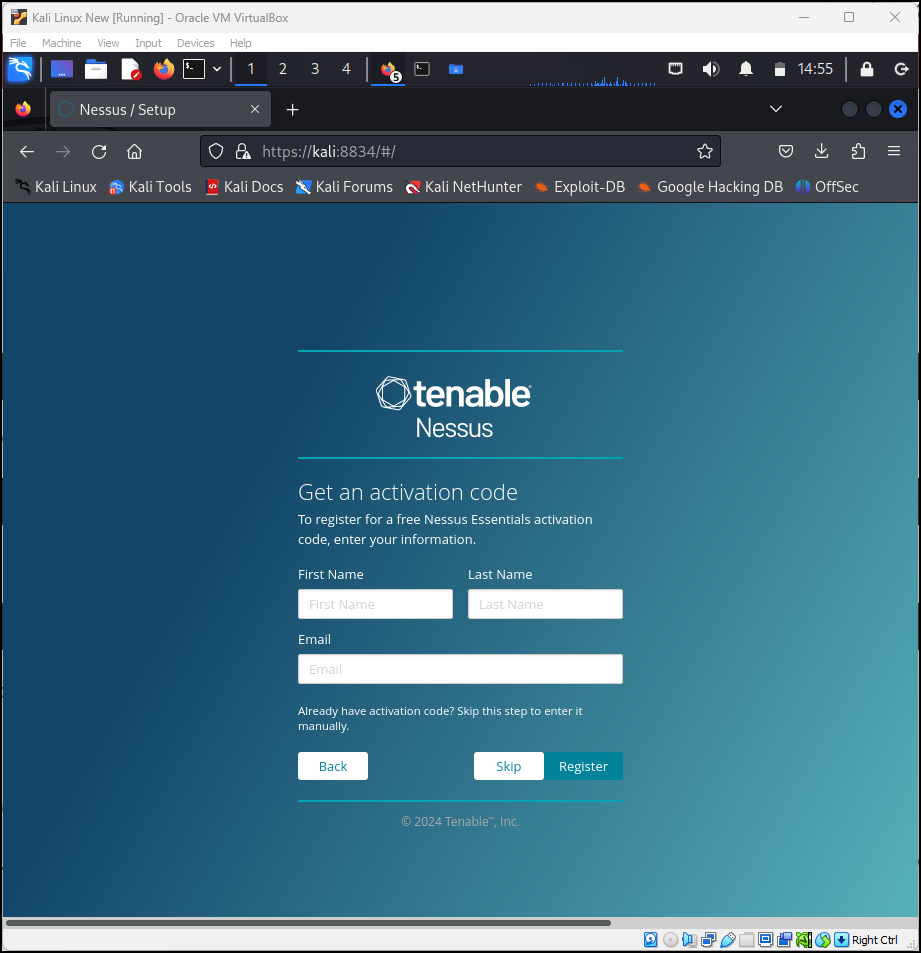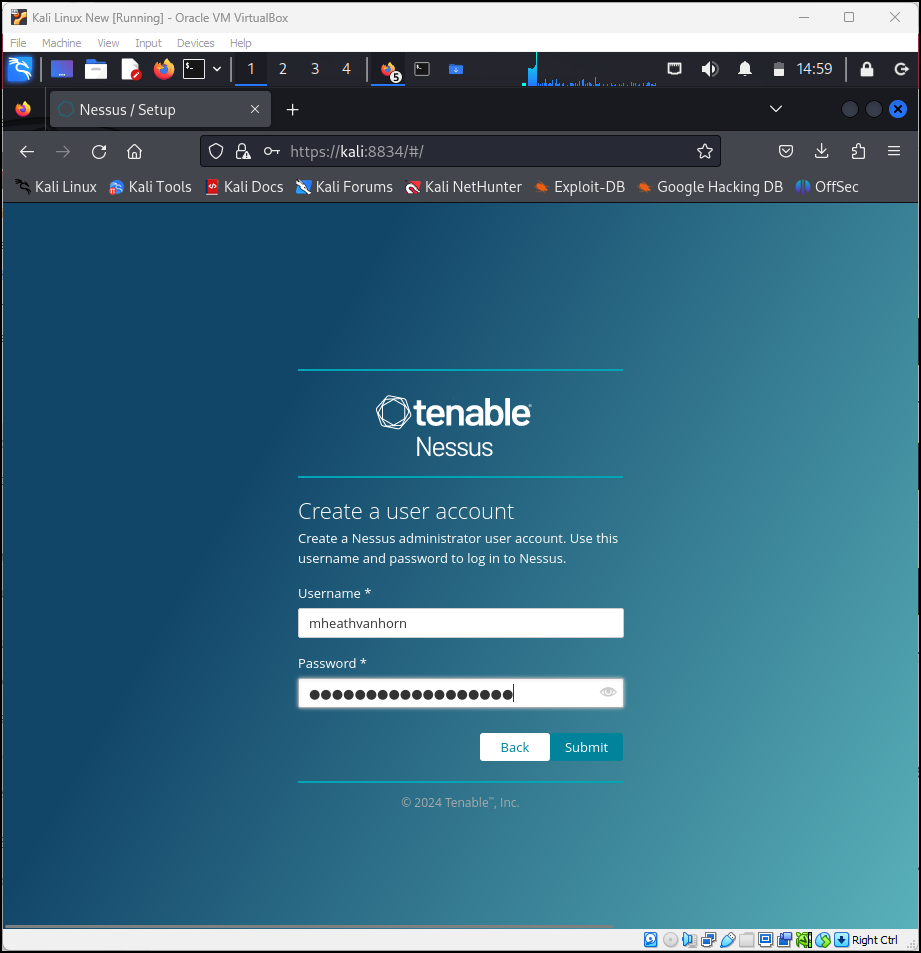12 Create a Kali Linux VM
Dante Rocca
Kali Linux is the distribution of choice for attacking a network thanks to the many attack tools it comes bundled with. This lab provides instructions for making a Kali Linux VM.
Learning Objectives
- Successfully download, install, and run Kali Linux in a GNS3 environment
Prerequisites
Deliverables
- None – this is a preparatory lab that supports other labs in this book
Resources
- Download Kali Linux
- Download Nessus Essentials for Education
Contributors and Testers
- Mathew J. Heath Van Horn, PhD, ERAU-Prescott
Phase I – Download and Installation
We are going to download and install the Kali Linux VM. We are going to use the .iso image and not the prebuilt VM. Generally, the pre-made VM works fine, but a few testers had problems. When we used the .iso the configuration and compatibility problems resolved themselves.
- Start by downloading the recommended image file here
IMPORTANT: Make sure you download the Installer Image and not the Virtual Machine image.
- Select the 64-bit installer image and click the download method you prefer
- Once the image file has been downloaded, open VirtualBox
- Click on the new button (Figure 1)
- Give the new VM a name
- Select the folder you want to save the VM
- Select the ISO image you downloaded earlier
- Select next (Figure 2)
- Leave the defaults for the hardware (Figure 3)
- Use the defaults for the virtual disk space (Figure 4)
- Verify the settings and click on finish (Figure 5)
- Start the Kali VM
- Hit enter over the graphical install (Figure 6)
- Select your language and hit continue (Figure 7)
- Select your region and hit continue (Figure 8)
- Select your keyboard layout and click continue (Figure 9)
- Leave the hostname as default and click continue (Figure 10). Then leave the domain blank and click continue (Figure 11)
- Give the full name as student and click continue (Figure 12)
- Then leave the account name as student and click continue (Figure 13)
- Like other VMs use the password Security1 and click continue (Figure 14)
- Select your time zone and click continue (Figure 15)
- Partition Disk
- Once the software selection screen pops up, leave the defaults and click continue (Figure 20)
- Once the install GRUB boot loader screen pops up, leave the default yes radio button and click continue (Figure 21)
- On the next screen select the device, there should be only one, and click continue (Figure 22)
- Once this is done, click continue one last time
- Finish the installation by clicking continue (Figure 23)
- Once the login screen pops up, login to make sure everything works
Phase II – Necessary Software
While Kali comes with a large toolset, there are two tools we will need later that don’t come preinstalled.
- Open the terminal and run this command to install rainbow crack
sudo apt-get install rainbowcrack
- Once the install completes, close the terminal and open Firefox
- In Firefox, go to this link to download Nessus Essentials for Education. Click on try now (Figure 24). You will need to provide a business email but none of our testers has reported spam from this
- Click the download button that appears. Then leave the defaults on the next screen and click download. At the time of writing the version of Nessus is 10.7.1
- Open the folder where you downloaded the file. Right-click inside the folder and click open terminal here (Figure 25)
- Use the following command to install the Nessus Package
sudo dpkg -i Nessus-10.7.1-ubuntu1404_amd64.deb
- Use the following command to start the Nessus Scanner. While we won’t do much with it right now, we will need to input the activation code from our email
/bin/systemctl start nessusd.service
- In the window that pops up enter the user password. Following that, reopen Firefox and go to this link
https://kali:8834
- The page will tell you that it is insecure. Click advanced and then Accept the risk and continue (Figure 26)
- Click continue on the first screen (Figure 27)
- Select the Register for Nessus Essentials radio button (Figure 28) and click continue. If you already got the email earlier, then click skip (Figure 29)
- Input the activation code from your email and click continue (Figure 30)
- Make a username and password for your account (Figure 31) and select submit

Figure 32 – This could take a while - Nessus will take a while to download and compile plugins so wait for this process to complete before switching the machine off
End of Lab
Figures for Printed Version
